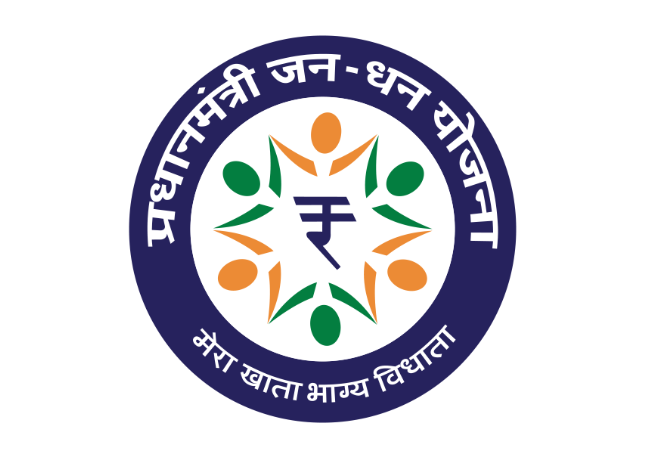Pradhan Mantri Jan Dhan Yojana (PMJDY) (GS Paper 2, Government Policies)

Context:
- The Pradhan Mantri Jan Dhan Yojana (PMJDY) is set to celebrate its 10th anniversary on August 15, 2024.
- This flagship initiative of the Government of India was launched with the primary objective of promoting financial inclusion across the country.
- The scheme has been instrumental in integrating the unbanked and underbanked segments of the population into the formal financial system.
What is Financial Inclusion?
Financial inclusion is the process of ensuring that all individuals and businesses have access to useful and affordable financial products and services. These services include:
- Banking Products: Savings and deposit accounts, credit facilities, and remittance services.
- Insurance Products: Life insurance, health insurance, and other types of insurance.
- Pension Products: Retirement savings and pension plans.
- Investment Products: Equity investments, mutual funds, and other financial instruments.
Financial inclusion aims to provide these services at an affordable cost, enabling broader economic participation and reducing financial exclusion.
Benefits of Financial Inclusion:
Efficient Mobilization of Resources:
- Increased Deposits: As more people open bank accounts, the volume of deposits increases, allowing banks to mobilize resources for investment in productive sectors.
- Investment Opportunities: Enhanced banking penetration encourages individuals to save and invest, contributing to overall economic growth.
Poverty Alleviation:
- Access to Credit: Formal credit facilities provided through banks help low-income households secure affordable loans, which can be used for various purposes, including education, health, and business.
- Protection Against Exploitative Lending: Financial inclusion helps protect vulnerable populations from predatory lending practices that are often found in informal financial systems.
Formalization of the Economy:
- Regulation and Tax Compliance: Bringing more individuals and businesses into the formal financial sector ensures better regulation and compliance with tax laws.
- Enhanced Transparency: Formal financial transactions are recorded, reducing the risk of corruption and improving transparency.
According to the 2011 Census, only 58% of households in India had access to banking services. PMJDY aims to address this gap.
Overview of PMJDY:
Launched on August 28, 2014, PMJDY was designed to provide access to financial services for the unbanked population. Key features of the scheme include:
Basic Savings Bank Deposit Accounts:
- Eligibility: Any individual without a bank account can open a PMJDY account.
- Account Access: Accounts can be opened at any bank branch or Business Correspondent (Bank Mitra) outlet.
Key Benefits:
- No Minimum Balance Requirement: PMJDY accounts do not require a minimum balance, making them accessible to low-income individuals.
- Interest on Deposits: Account holders earn interest on their savings.
- Rupay Debit Card: Each account holder receives a Rupay debit card, enabling electronic transactions and access to ATMs.
- Accident Insurance Cover: An insurance cover of ₹2 lakh is provided for accidental death or disability.
- Overdraft Facility: Eligible account holders can avail an overdraft facility of up to ₹10,000.
- Direct Benefit Transfer (DBT): PMJDY accounts are eligible for DBT schemes, allowing beneficiaries to receive subsidies and welfare payments directly into their accounts.
- MUDRA Scheme: PMJDY account holders can access loans under the MUDRA scheme for small business enterprises.
Impact of PMJDY:
Expansion of Banking Access:
- Account Holders: As of July 31, 2024, there are approximately 52.99 crore PMJDY accounts with a total balance exceeding ₹2 lakh crore.
- Increased Penetration: The scheme has significantly increased the number of individuals with bank accounts, particularly in rural and underserved areas.
Direct Benefit Transfers:
- Streamlined Payments: PMJDY has facilitated the direct transfer of government benefits and subsidies, improving the efficiency and transparency of welfare schemes.
- Reduction in Leakages: Direct transfers minimize intermediaries, reducing the risk of corruption and ensuring that benefits reach the intended recipients.
Women’s Financial Inclusion:
- Focus on Women: Over 55% of PMJDY accounts are held by women, highlighting the scheme’s success in promoting gender-inclusive financial services.
- Empowerment: Access to financial services empowers women economically, contributing to their social and economic development.
Financial Literacy and Awareness:
- Educational Campaigns: PMJDY includes initiatives to raise financial literacy among beneficiaries, teaching them about account usage, savings, and other financial services.
- Awareness Programs: Regular awareness programs help beneficiaries understand and utilize the services available to them.
Conclusion:
- The Pradhan Mantri Jan Dhan Yojana has been a transformative force in promoting financial inclusion in India.
- By expanding banking access, facilitating direct benefit transfers, and focusing on women’s inclusion, PMJDY has played a crucial role in integrating previously excluded segments of the population into the formal financial system.
- As it marks a decade of its implementation, the scheme continues to be a cornerstone of India's efforts to foster financial inclusion and economic empowerment.


